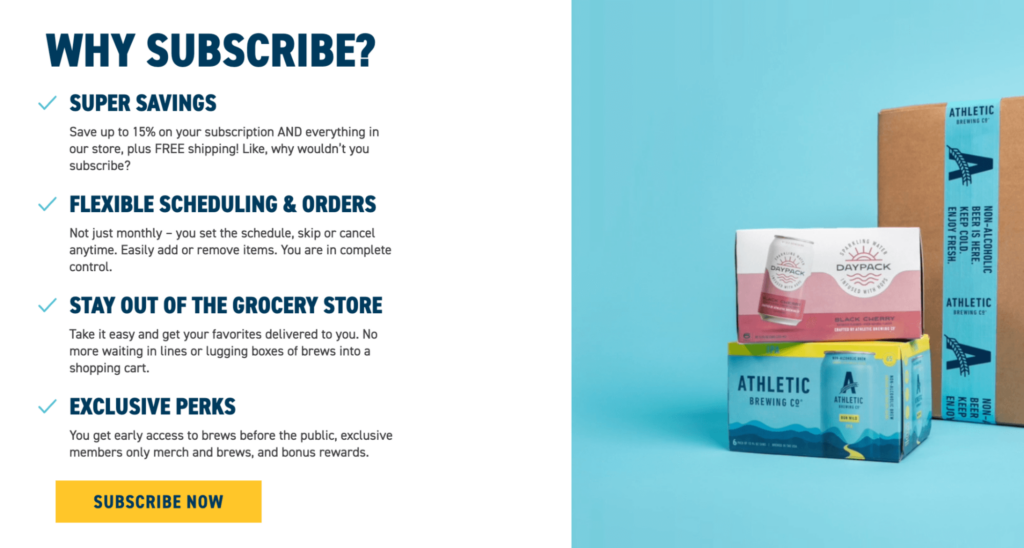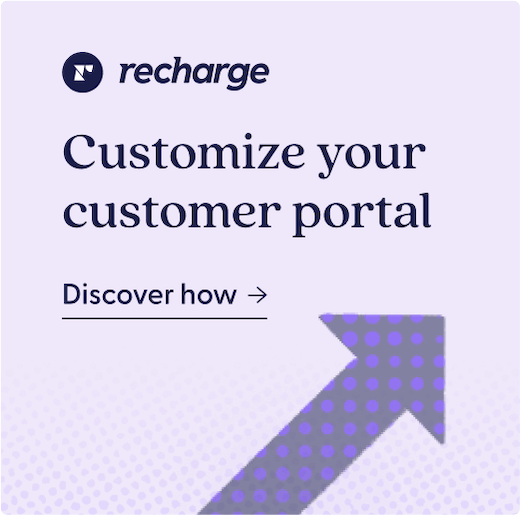There’s never been a better time to capitalize on the non-alcoholic beverage market. According to Statista, revenue in the non-alcoholic beverage market in 2023 amounts to nearly $500 billion USD.
Younger generations appear to be leading the charge. A recent survey by the alcohol delivery platform Drizly found that 38% of Gen Z-ers and 25% of Millennials are replacing at least some traditional alcoholic drinks with non-alcoholic ones, compared to 15% of Gen X-ers and 8% of Boomers.
This is great news for beverage brands and the numerous categories they fall into—from coffee and tea to soda to CBD drinks and even zero-proof beer and wine. And, by implementing a few key strategies, these merchants can maximize their AOV and gain a loyal customer base that is here for the long haul.
We’ve covered how the best food subscription boxes can stand apart from the competition. Now, let’s explore the key tactics and features that beverage merchants can implement to get ahead and stay ahead.
Key takeaways
- Consumers, particularly younger generations, are increasingly interested in non-alcoholic beverages, with the category seeing significant growth.
- Subscriptions are a natural fit for beverage brands, whose products are regularly consumed and need to be replenished.
- To increase AOV, beverage subscription brands should focus on cross-selling and upselling, product bundles, and analytics.
The advantages & opportunities of subscriptions
For beverage brands, subscriptions are a no-brainer. Whether it’s a morning cup of coffee, post-workout refreshment, or evening mocktail, many people create daily rituals around beverages. Subscriptions take the guesswork out of replenishing their supply, adding convenience and often cost-savings.

What’s more, industry research shows that Food & Beverage subscription brands continue to see substantial growth. In 2022, we found that these merchants held the highest overall AOV and LTV on average of any product vertical, and saw an average of 11% AOV growth year-over-year.
With this in mind, the question for beverage merchants is not whether they should implement subscriptions, but rather, how they can get the most value out of their subscriptions? We’ll get to that in the next section.
3 key tools & tactics for increasing beverage subscription brands’ AOV
To achieve what matters most for their business, beverage subscription merchants must focus on what matters most to their customers: flexibility and customization.

1. Offer personalized cross-selling & upselling
Beverage brands need powerful cross-selling and upselling tools at their disposal. It’s not enough to allow customers to add on products to their orders or upgrade their subscription. To truly encourage shoppers to try new products, merchants need the proper subscription solution and integrations in place to make their recommendations personalized and trustworthy.
For non-alcoholic beverage brands, cross-selling and upselling opportunities could include:
- A one-time purchase of a sample soda pack with all the most popular flavors, which customers could add on to their subscription box to try new drinks
- An upgrade to a more premium, small-batch version of a coffee subscription for a slightly higher price
- Upselling a subscription to a one-time customer who has bought a particular drink multiple times as a one-time purchase
- A one-time purchase gift box with multiple beverage flavors, as well as extras like mocktail recipes, glassware, and snacks
The more personalized these recommendations are, the more likely subscribers are to take advantage of them and have a positive experience with the brand. It’s key, too, to place cross-selling and upselling opportunities at multiple stages of the shopping process. For example, offer recommendations in both the customer portal and on the checkout page to make them as visible, convenient, and easy to access as possible.
2. Provide product bundles

Having a great product bundling tool is key for increasing the value of customers’ orders. Merchants should ensure that the technology they use allows them to customize bundles in a variety of ways so shoppers can get exactly what they’re looking for.
For example, many beverage merchants may choose to offer a sample bundle of their most popular flavors. This can be offered as a single purchase to help new customers find their perfect flavor match, or as a subscription to offer variety in each delivery and prevent flavor fatigue. These curated product bundles can save customers time and energy sifting through your website.
Merchants may also consider build-a-bundle options, where shoppers can add multiple different beverage flavors or varieties to their delivery for a set price. This allows customers to customize their ideal assortment of products and, depending on the brand and products, may make them more likely to subscribe.
Many customers may expect that they can edit the items in their bundle, especially if the bundle is offered as a subscription. Merchants should ensure that whatever bundling solution they choose is set up to offer this flexibility from order to order.
3. Dig deep into analytics
No matter what strategies a merchant uses to increase AOV, having the proper analytics tools in place is crucial for measuring success and optimizing future efforts. These can be used for assessing the effectiveness of certain campaigns, tracking product performance, effectively managing inventory, and honing these strategies over time.
By being meticulous with analytics, beverage merchants can extract the greatest level of insights from their efforts, paving the way for steadily increased AOV over time. This makes it key to ensure that your subscription solution is fully equipped with the analytics capabilities your business needs to assess performance and plan for the future.
Boost AOV with beverage subscription boxes
Whether consumers are looking for a fun new beverage to add to their daily routines or an alternative to craft beer or wine, subscriptions are a powerful strategy for increasing AOV and fostering long-term customer relationships.
The key: having the proper tools in place to offer as much flexibility and convenience as possible for customers. By centering shoppers’ needs in this way, both beverage merchants and subscribers can get the most value out of recurring offerings.



